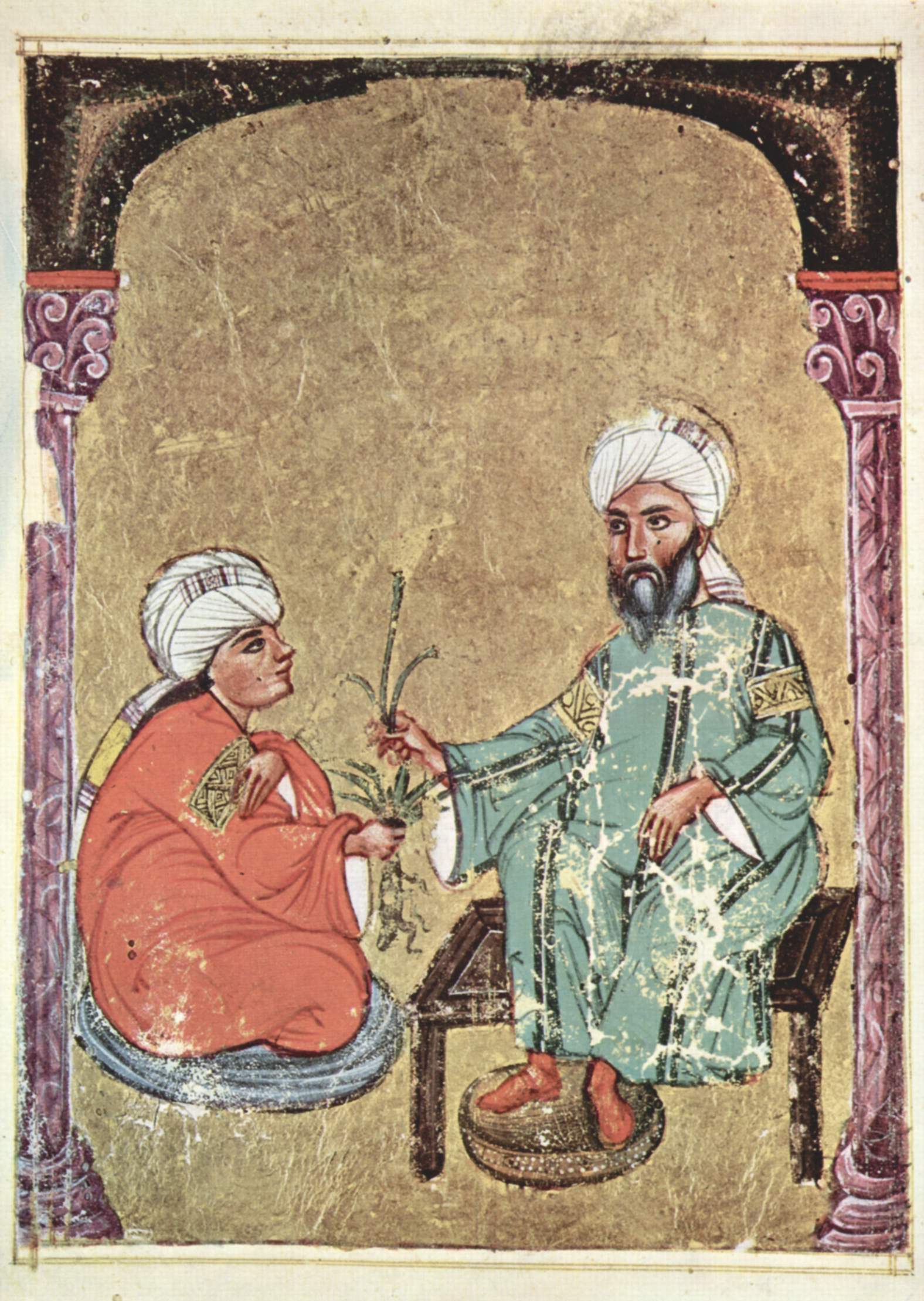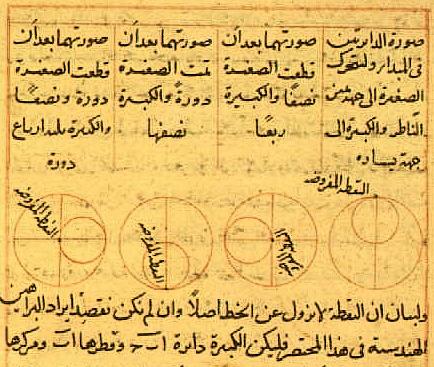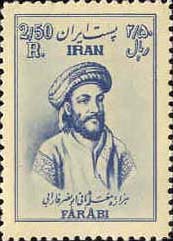|
Avicenna
Ibn Sina ( fa, ابن سینا; 980 – June 1037 CE), commonly known in the West as Avicenna (), was a Persian polymath who is regarded as one of the most significant physicians, astronomers, philosophers, and writers of the Islamic Golden Age, and the father of early modern medicine. Sajjad H. Rizvi has called Avicenna "arguably the most influential philosopher of the pre-modern era". He was a Muslim Peripatetic philosopher influenced by Greek Aristotelian philosophy. Of the 450 works he is believed to have written, around 240 have survived, including 150 on philosophy and 40 on medicine. His most famous works are '' The Book of Healing'', a philosophical and scientific encyclopedia, and '' The Canon of Medicine'', a medical encyclopedia which became a standard medical text at many medieval universities and remained in use as late as 1650. Besides philosophy and medicine, Avicenna's corpus includes writings on astronomy, alchemy, geography and geology, psycholo ... [...More Info...] [...Related Items...] OR: [Wikipedia] [Google] [Baidu] |
The Canon Of Medicine
''The Canon of Medicine'' ( ar, القانون في الطب, italic=yes ''al-Qānūn fī al-Ṭibb''; fa, قانون در طب, italic=yes, ''Qanun-e dâr Tâb'') is an encyclopedia of medicine in five books compiled by Persian physician-philosopher Avicenna (, Ibn Sina) and completed in 1025. Perhaps one of the most famous and influential early books, that continued to influence later creations. It presents an overview of the contemporary medical knowledge of the Islamic world, which had been influenced by earlier traditions including Greco-Roman medicine (particularly Galen), Persian medicine, Chinese medicine and Indian medicine. ''The Canon of Medicine'' remained a medical authority for centuries. It set the standards for medicine in Medieval Europe and the Islamic world and was used as a standard medical textbook through the 18th century in Europe. It is an important text in Unani medicine, a form of traditional medicine practiced in India. Title The English tit ... [...More Info...] [...Related Items...] OR: [Wikipedia] [Google] [Baidu] |
Early Islamic Philosophy
Early Islamic philosophy or classical Islamic philosophy is a period of intense philosophical development beginning in the 2nd century AH of the Islamic calendar (early 9th century CE) and lasting until the 6th century AH (late 12th century CE). The period is known as the Islamic Golden Age, and the achievements of this period had a crucial influence in the development of modern philosophy and science. For Renaissance Europe, "Muslim maritime, agricultural, and technological innovations, as well as much East Asian technology via the Muslim world, made their way to western Europe in one of the largest technology transfers in world history.” This period starts with al-Kindi in the 9th century and ends with Averroes (Ibn Rushd) at the end of 12th century. The death of Averroes effectively marks the end of a particular discipline of Islamic philosophy usually called the '' Peripatetic Arabic School'', and philosophical activity declined significantly in Western Islamic countrie ... [...More Info...] [...Related Items...] OR: [Wikipedia] [Google] [Baidu] |
The Book Of Healing
''The Book of Healing'' (; ; also known as ) is a scientific and philosophical encyclopedia written by Abu Ali ibn Sīna (aka Avicenna) from medieval Persia, near Bukhara in Maverounnahr. He most likely began to compose the book in 1014, completed it around 1020, and published it in 1027. This work is Ibn Sina's major work on science and philosophy, and is intended to "cure" or "heal" ignorance of the soul. Thus, despite its title, it is not concerned with medicine, in contrast to Avicenna's earlier ''The Canon of Medicine'' (5 vols.) which is, in fact, medical. The book is divided into four parts: logic, natural sciences, mathematics (a quadrivium of arithmetic, geometry, astronomy), and metaphysics.Goodman, Lenn Evan. 1992. ''Avicenna''. Routledge. . p. 31. It was influenced by ancient Greek philosophers such as Aristotle; Hellenistic thinkers such as Ptolemy; and earlier Persian/Muslim scientists and philosophers, such as Al-Kindi (Alkindus), Al-Farabi (Alfarabi), and Al ... [...More Info...] [...Related Items...] OR: [Wikipedia] [Google] [Baidu] |
Avicenna Mausoleum
The Mausoleum of Avicenna (Persian: آرامگاه بوعلی سینا) is a monumental complex located at Avicenna Square, Hamadan, Iran. Dedicated to the Persian polymath Avicenna, the complex includes a library, a small museum, and a spindle-shaped tower inspired by the Ziyarid-era Kavus Tower. History Designed by Hooshang Seyhoun, it was built in 1952, replacing an older building dedicated to Avicenna which was destroyed in 1950. The Pahlavi government had plans to build the mausoleum since at least 1939. The mausoleum was eventually dedicated in a grand ceremony in May 1954, and the avenue running in front of it was also renamed in honor of Avicenna. As the monument was a central element of the propagation of Iranian nationalism by the Pahlavi government, it was consequently in danger of being defaced, but as Khomeini himself was an admirer of Avicenna, the square was not renamed after the 1979 Revolution The Iranian Revolution ( fa, انقلاب ایران, E ... [...More Info...] [...Related Items...] OR: [Wikipedia] [Google] [Baidu] |
Medicine In The Medieval Islamic World
In the history of medicine, "Islamic medicine" is the science of medicine developed in the Middle East, and usually written in Arabic, the ''lingua franca'' of Islamic civilization. Islamic medicine adopted, systematized and developed the medical knowledge of classical antiquity, including the major traditions of Hippocrates, Galen and Dioscorides. During the post-classical era, Middle Eastern medicine was the most advanced in the world, integrating concepts of ancient Greek, Roman, Mesopotamian and Persian medicine as well as the ancient Indian tradition of Ayurveda, while making numerous advances and innovations. Islamic medicine, along with knowledge of classical medicine, was later adopted in the medieval medicine of Western Europe, after European physicians became familiar with Islamic medical authors during the Renaissance of the 12th century. Medieval Islamic physicians largely retained their authority until the rise of medicine as a part of the natural sciences, beg ... [...More Info...] [...Related Items...] OR: [Wikipedia] [Google] [Baidu] |
Science In The Medieval Islamic World
Science in the medieval Islamic world was the science developed and practised during the Islamic Golden Age under the Umayyads of Córdoba, the Abbadids of Seville, the Samanids, the Ziyarids, the Buyids in Persia, the Abbasid Caliphate and beyond, spanning the period roughly between 786 and 1258. Islamic scientific achievements encompassed a wide range of subject areas, especially astronomy, mathematics, and medicine. Other subjects of scientific inquiry included alchemy and chemistry, botany and agronomy, geography and cartography, ophthalmology, pharmacology, physics, and zoology. Medieval Islamic science had practical purposes as well as the goal of understanding. For example, astronomy was useful for determining the '' Qibla'', the direction in which to pray, botany had practical application in agriculture, as in the works of Ibn Bassal and Ibn al-'Awwam, and geography enabled Abu Zayd al-Balkhi to make accurate maps. Islamic mathematicians such as Al-Khwariz ... [...More Info...] [...Related Items...] OR: [Wikipedia] [Google] [Baidu] |
Al-Farabi
Abu Nasr Muhammad Al-Farabi ( fa, ابونصر محمد فارابی), ( ar, أبو نصر محمد الفارابي), known in the West as Alpharabius; (c. 872 – between 14 December, 950 and 12 January, 951)PDF version was a renowned early Islamic philosopher and jurist who wrote in the fields of political philosophy, metaphysics, ethics and logic. He was also a scientist, cosmologist, mathematician and music theorist. Ludwig W. Adamec (2009), ''Historical Dictionary of Islam'', pp.95–96. Scarecrow Press. . In Islamic philosophical tradition he was often called "the Second Teacher", following Aristotle who was known as "the First Teacher". He is credited with preserving the original Greek texts during the Middle Ages via his commentaries and treatises, and influencing many prominent philosophers, such as Avicenna and Maimonides. Through his works, he became well-known in the West as well as the East. Biography The existing variations in the basic accounts of al-Fara ... [...More Info...] [...Related Items...] OR: [Wikipedia] [Google] [Baidu] |
Aristotelianism
Aristotelianism ( ) is a philosophical tradition inspired by the work of Aristotle, usually characterized by deductive logic and an analytic inductive method in the study of natural philosophy and metaphysics. It covers the treatment of the social sciences under a system of natural law. It answers why-questions by a scheme of four causes, including purpose or teleology, and emphasizes virtue ethics. Aristotle and his school wrote tractates on physics, biology, metaphysics, logic, ethics, aesthetics, poetry, theatre, music, rhetoric, psychology, linguistics, economics, politics, and government. Any school of thought that takes one of Aristotle's distinctive positions as its starting point can be considered "Aristotelian" in the widest sense. This means that different Aristotelian theories (e.g. in ethics or in ontology) may not have much in common as far as their actual content is concerned besides their shared reference to Aristotle. In Aristotle's time, philosophy ... [...More Info...] [...Related Items...] OR: [Wikipedia] [Google] [Baidu] |
Islamic Golden Age
The Islamic Golden Age was a period of cultural, economic, and scientific flourishing in the history of Islam, traditionally dated from the 8th century to the 14th century. This period is traditionally understood to have begun during the reign of the Abbasid caliph Harun al-Rashid (786 to 809) with the inauguration of the House of Wisdom in Baghdad, the world's largest city by then, where Muslim scholars and polymaths from various parts of the world with different cultural backgrounds were mandated to gather and translate all of the known world's classical knowledge into Aramaic and Arabic. The period is traditionally said to have ended with the collapse of the Abbasid caliphate due to Mongol invasions and the Siege of Baghdad in 1258. A few scholars date the end of the golden age around 1350 linking with the Timurid Renaissance, while several modern historians and scholars place the end of the Islamic Golden Age as late as the end of 15th to 16th centuries meeting with the Isl ... [...More Info...] [...Related Items...] OR: [Wikipedia] [Google] [Baidu] |
Avicennism
Avicennism is a school of Persian philosophy which was established by Avicenna. He developed his philosophy throughout the course of his life after being deeply moved and concerned by the ''Metaphysics'' of Aristotle and studying it for over a year. According to Henry Corbin and Seyyed Hossein Nasr, there are two kinds of Avicennism: Islamic Avicennism, and Latin Avicennism. According to Nasr, the Latin Avicennism was based on the former philosophical works of Avicenna. This school followed the Peripatetic school of philosophy and tried to describe the structure of reality with a rational system of thinking. In the twelfth century AD, it became influential in Europe, particularly in Oxford and Paris, and affected some notable philosophers such as Thomas Aquinas, Roger Bacon and Duns Scotus. While the Latin Avicennism was weak in comparison with Latin Averroism, according to Étienne Gilson there was an "Avicennising Augustinism". On the other hand, Islamic Avicennism is based on his ... [...More Info...] [...Related Items...] OR: [Wikipedia] [Google] [Baidu] |
Hamadan
Hamadan () or Hamedan ( fa, همدان, ''Hamedān'') (Old Persian: Haŋgmetana, Ecbatana) is the capital city of Hamadan Province of Iran. At the 2019 census, its population was 783,300 in 230,775 families. The majority of people living in Hamadan identify as ethnic Persians. Hamedan is believed to be among the oldest Iranian cities. It is possible that it was occupied by the Assyrians in 1100 BCE; the Ancient Greek historian, Herodotus, states that it was the capital of the Medes, around 700 BCE. Hamedan has a green mountainous area in the foothills of the 3,574-meter Alvand Mountain, in the midwest part of Iran. The city is 1,850 meters above sea level. The highly cultural nature of this old city and its historic sites attract tourists during the summer to this city, located approximately southwest of Tehran. The major sights of this city are the Ganj Nameh inscription, the Avicenna monument and the Baba Taher monument. The main language in the city is Persian. History ... [...More Info...] [...Related Items...] OR: [Wikipedia] [Google] [Baidu] |
Persian Philosophy
Iranian philosophy ( Persian: فلسفه ایرانی) or Persian philosophy can be traced back as far as to Old Iranian philosophical traditions and thoughts which originated in ancient Indo-Iranian roots and were considerably influenced by Zarathustra's teachings. According to the Oxford Dictionary of Philosophy, the chronology of the subject and science of philosophy starts with the Indo-Iranians, dating this event to 1500 BC. The Oxford dictionary also states, "Zarathustra's philosophy entered to influence Western tradition through Judaism, and therefore on Middle Platonism." Throughout Iranian history and due to remarkable political and social changes such as the Arab and Mongol invasions of Persia, a wide spectrum of schools of thoughts showed a variety of views on philosophical questions extending from Old Iranian and mainly Zoroastrianism-related traditions, to schools appearing in the late pre-Islamic era such as Manicheism and Mazdakism as well as various post-Isl ... [...More Info...] [...Related Items...] OR: [Wikipedia] [Google] [Baidu] |







